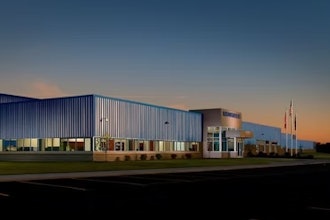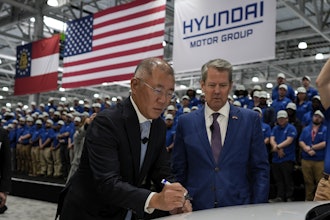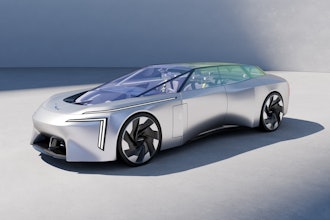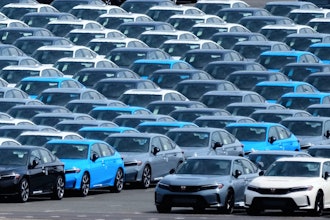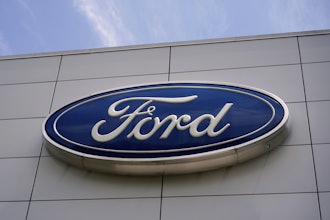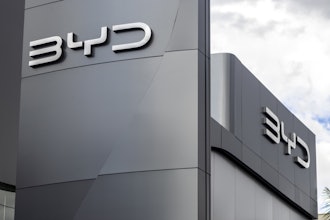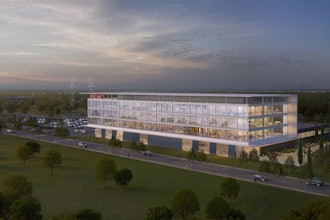In the report “Driverless Future: A Policy Roadmap for City Leaders,” experts in transportation, economics and urban planning highlight the benefits of autonomous vehicles. They also present a stark warning to city leaders who don’t plan for this future. At the same time, the Trump administration is proposing a $1 trillion infrastructure new deal. So, while the biggest automotive brands are making announcements on their plans for our driverless future, we must also begin to address key questions about how and who will build the infrastructure required to make it a reality.
Autonomous vehicles are already being tested in many locations in the United States. Yet, vehicle manufacturers are taking an “if you build it they will come” attitude, expecting municipalities and private industry to develop and build "smart infrastructure" to accommodate autonomous vehicles. This includes such things as devices, buildings, roads, bridges, traffic lights, toll booths and message signs that will provide data to guide autonomous vehicles on the roads. The goal is to make sure these standing structures can be clearly identified and measured by a car’s sensors.
Another key to smart infrastructure is not centered on building more roads, but by taking better care of the ones we have, and equipping them to be used more efficiently. In fact, a study conducted by the Information Technology & Innovation Foundation last year concluded that investing in smart infrastructure has a 60 percent greater impact than investing in roads alone.
It is well documented that our nation’s roads and bridges, indeed our entire highway infrastructure, are badly in need of repair. Cost estimates are in the billions. So, with autonomous driving on the horizon, the big question is: How can federal, state and local governments fund the identified infrastructure upgrades and address new technology and assets necessary to accommodate autonomous vehicles?
The infrastructure challenges of today are not dissimilar to those from a century ago when Henry Ford’s assembly line innovation made automobiles affordable to the masses without the infrastructure or roads in place to properly accommodate them. The response and impact was huge, as suburbanization and super highways changed our landscape and our lifestyle.
So, what will our response to autonomous cars be? To begin to answer this, we first must understand what it takes to build an adequate, smart infrastructure for autonomous vehicles and who will drive this innovation.
Clearly, establishing a smart infrastructure will be a monumental task on so many levels. It will take unprecedented cooperation, standardization and innovation at all levels of government and with private enterprise. With autonomous vehicles, innovation has and will come from both traditional automotive OEMs and their partners, along with more non-traditional players like Apple, Tesla, Uber and Google — all of which have made great strides and are leading the way in autonomous vehicle testing and development.
It is also very likely that innovation advances supporting smart infrastructure development will come from both traditional Silicon Valley technology companies, as well as non-traditional players in non-traditional locations.
PPG, for example, has a long history of providing paints and coatings that help automotive manufacturers protect and beautify vehicles, as well as coatings applied to bridges, roadways and public infrastructure. Carnegie Mellon University has a center devoted to autonomous vehicle technology development and has been testing it for over three decades. Ford recently announced a $1 billion investment in Argo AI, a Pittsburgh-based company that will develop a virtual driver system for a self-driving vehicle Ford hopes to launch in 2021, and Uber has been testing its self-driving vehicles on Pittsburgh’s roads since last August.
But beyond our history in the automotive industry, how can a paint and coatings company contribute to autonomous vehicle and smart infrastructure development?
First, they tend to have deep relationships with all of the major automotive OEMs. Collaboration with the autonomous vehicle manufacturers will be key to developing infrastructure that can communicate with the vehicles. Most people would be surprised at how much science goes into paint and coatings. Paint and coatings companies have people focused on research and development, and some of them figuring out how to make the paint look and function better. Tomorrow, improved pigments and resins, for example, will absorb less infrared light, which will allow laser-based object sensors to see cars better, no matter the color. Today, darker car colors absorb more infrared light, which means sensors can’t see them as well.
Aside from highly durable and functional paints, paint and coatings companies have technology to protect and enhance the lenses of the myriad of sensors and cameras that will be a major part of the supporting infrastructure. For example, hydrophilic and hydrophobic coatings on sensor covers and camera lenses will prevent buildup of dirt, enhancing the sensors ability to read the infrastructure. Its electro deposition processes will become all-important not only in protecting vehicles and infrastructure, but in 3D printing processes and the making of photo sensitive circuit boards.
Over the last century, we have only seen small incremental shifts in the efficiency and infrastructure of our transportation systems. This, however, is rapidly starting to change, and we are excited about the prospect of being part of the movement. Advances in information and communications technologies, connectivity, data collection, analytics and other technologies are facilitating a revolution that will dramatically alter the face of the transportation infrastructure as we know it today.
David Bem is Chief Technology Officer and Vice President of Science & Technology at PPG.















